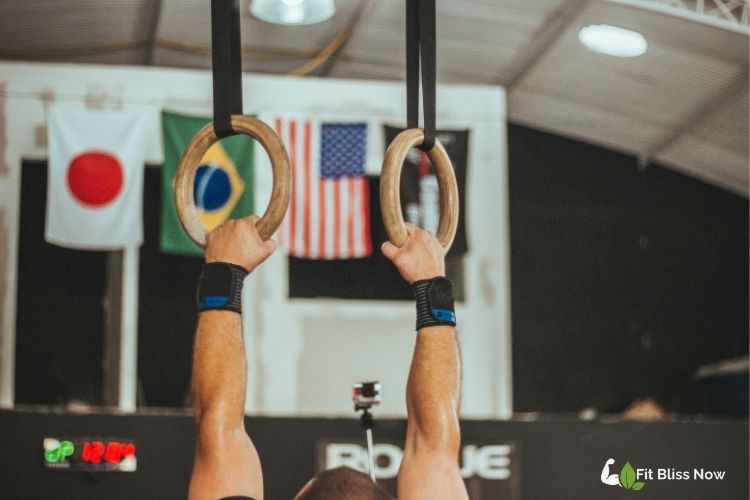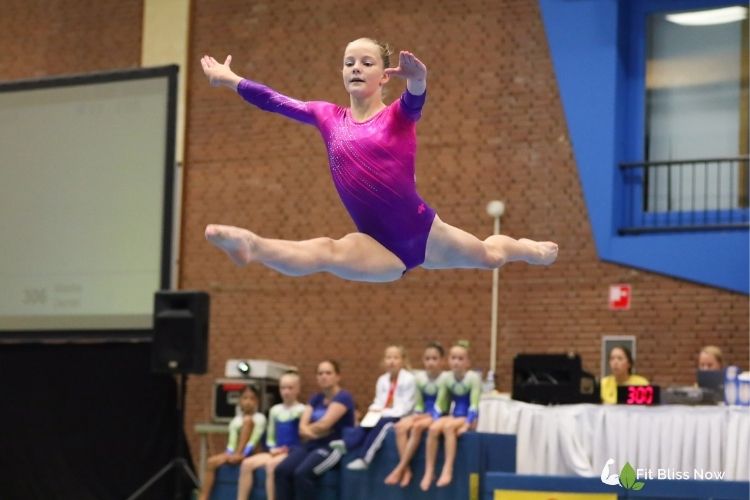Would you like to learn the basics of gymnastics and discover its benefits for an effective workout? This sport, which enhances both flexibility and strength, helps you understand your body better. With movements that engage every part of your body, gymnastics can elevate your fitness journey to new levels. From fundamental knowledge to the most well-known exercises, tips for beginners, and techniques you can practice at home, you’ll find everything you’re curious about in our comprehensive guide!
Introduction to Gymnastics: Basic Information and Benefits
Gymnastics is one of the sports that require physical strength, flexibility, balance, and endurance. Since its introduction to the United States in 1830, this sport has rapidly developed and become one of the Olympic disciplines. With highly comprehensive techniques, gymnastics enhances skills such as strength and coordination while improving the body’s balance performance. Serving as a foundation for many modern sports, gymnastics plays a crucial role in the Olympic Games.
There are various types of gymnastics, including artistic gymnastics, aerobic gymnastics, acrobatic gymnastics, and rhythmic gymnastics. Some disciplines even have separate categories for men and women. Here are the distinctive features of the main gymnastics types:

Guide to Gymnastics Movements: Basic Information and Benefits
Acrobatic Gymnastics:
Also known as acrobatics, this type can be performed by both men and women. Acrobatic gymnastics is practiced in pairs, trios, or groups of four. Performances are accompanied by instrumental music without lyrics.
Artistic Gymnastics:
One of the most well-known gymnastics disciplines, it features different apparatuses for men and women.
- Women’s apparatuses: Balance beam, floor exercises, uneven bars, and vault.
- Men’s apparatuses: Floor exercises, parallel bars, vault, horizontal bar, pommel horse, and rings.
Rhythmic Gymnastics:
This popular form is predominantly practiced by women and involves apparatuses like ropes, hoops, balls, clubs, and ribbons. Performances are set to music, blending dance and gymnastics elements.
Trampoline Gymnastics:
This discipline focuses on high jumps and acrobatic maneuvers, showcasing athletes’ aerial skills.
Aerobic Gymnastics:
Performed individually, in pairs, trios, or groups of six, aerobic gymnastics emphasizes strength, flexibility, and coordination through dynamic routines.
In addition to these types, there is also general gymnastics, which can be practiced by people of all ages.
This form of gymnastics is often chosen for maintaining health or as part of a fitness routine.
Like every sport, gymnastics offers numerous benefits. Among its most well-known advantages are the improvements in coordination, strength, and balance [1]. Regular participation in gymnastics not only enhances athletic performance but also brings a wide range of long-term benefits. Here are the key benefits of gymnastics:
1. Enhances Motor Skills
Gymnastics helps develop motor skills. Research has shown that individuals who regularly practice gymnastics experience faster overall motor development over time [2]. This improvement in performance and mobility also contributes to better posture.
2. Improves Flexibility
Those who incorporate gymnastics into their routine can significantly increase their flexibility. Movements such as bends and stretches help reduce muscle and joint stiffness, allowing you to perform exercises more effectively over time [2].
3. Prevents Growth Disorders in Early Ages
Introducing gymnastics at an early age can prevent growth-related issues and combat fatigue [3].
4. Boosts Coordination and Balance
Gymnastics is among the best sports for improving coordination and balance. By enhancing body awareness, it can reduce muscle tension and help you feel more alert and conscious [2].
5. Strengthens Self-Control and Self-Esteem
Regular gymnastics training can elevate your self-control and boost self-esteem. By training your mind, gymnastics helps you better handle external criticism and judgment [2].
6. Supports Cognitive Performance
Gymnastics contributes to healthier cognitive development. Skills such as reasoning, verbal communication, academic performance, and memory can improve with consistent practice. The sport also sharpens attention, reasoning, and learning abilities [2].
7. Improves Bone Health
Studies on both men and women engaging in intensive gymnastics exercises have shown an increase in bone mineral density, helping improve tissue mass and overall bone health [4].
8. Aids in Weight Loss and Muscle Gain
Gymnastics supports weight loss by reducing body fat while increasing muscle mass, allowing you to achieve a more toned appearance. Practicing gymnastics regularly can help maintain your fitness level [2].
9. Promotes Muscle Health
This sport positively impacts muscle health by improving muscle reflexes and supporting muscle elongation. Additionally, gymnastics helps correct poor posture, enabling better control over body alignment.
10. Enhances Mental Well-Being and Sleep Quality
Gymnastics can also benefit mental health. By boosting endorphin release, it may reduce symptoms of depression. Furthermore, regular practice has been linked to improved sleep quality.
What Are Gymnastics Movements?
Gymnastics encompasses a wide range of movements that require both strength and flexibility, engaging different parts of the body. These exercises improve overall conditioning and can vary from basic beginner-level moves to advanced techniques, each targeting distinct muscle groups.
The Most Common and Important Gymnastics Movements:
1. Forward Roll

Guide to Gymnastics Movements: Basic Information and Benefits
Although considered one of the simplest gymnastics moves, performing a forward roll requires proper positioning and technique.
Here’s how to do it:
- Start by standing upright with your feet together.
- Raise your hands above your head, keeping your arms straight.
- Slowly lower your hands toward the floor while bending your knees.
- Slightly tilt your hips and tuck your chin toward your chest.
- Push your body forward gently, allowing the momentum to carry you into a roll.
⚠️ Pay close attention to the position of your head and neck to avoid injury during the roll.
2. Splits (Straddle and Front Split)
The splits are fundamental in gymnastics and require significant leg flexibility. Warming up before attempting this move is crucial to prevent injuries.
How to Perform the Splits:
Straddle Split (Side Splits):
- Begin in a seated or standing position.
- Gradually open your legs to the sides until they’re as far apart as possible.
- Ensure your legs fully touch the floor.
- Keep your torso upright and your hands placed gently on the floor for balance.
Front Split:
- Extend one leg forward and the other leg backward.
- Maintain a straight posture with your chest facing forward.
- Slowly lower your hips toward the ground until both legs are fully extended in opposite directions.
Body Positions in Gymnastics
In gymnastics, body positioning is essential for balance, strength, and control. Movements range from simple poses to complex acrobatic skills, each requiring proper technique. Below are key gymnastics movements, including beginner-friendly exercises that enhance flexibility, coordination, and body awareness.
1. Body Hold (Vücut Tutuşu)
Similar to a plank, the body hold strengthens the core and improves overall balance.
✅ How to perform:
- Get into a half plank position with your elbows and toes touching the ground.
- Keep your body aligned in a straight line, lifting the rest of your body off the floor.
- Slightly round your back and pull your stomach inward to engage your core.
2. Handstand (Amut)
A controlled and advanced movement, the handstand requires strength and endurance. While challenging for beginners, consistent practice improves success over time.
✅ Steps:
- Start on all fours, placing your hands firmly on the floor shoulder-width apart.
- Spread your fingers to improve balance.
- Step one foot forward and keep the other back.
- Push strongly off the back foot, lifting your front foot off the ground.
- Extend your body upwards, ensuring it forms a straight line while upside down.
3. Vault with Overswing (Atlama Masasında Überşlak)
An advanced skill performed on the vaulting table, this move tests speed, strength, and precision.
✅ Execution:
- Stand at an appropriate distance from the vault.
- Determine your running distance and get into position.
- Run quickly but with control toward the vault.
- Place your hands firmly on the vault, push off, and lift your body upwards.
- Perform a flip in the air, keeping your body straight.
- Focus on a smooth and controlled landing.
4. Back Handspring (Flik Flak)
The back handspring involves continuous flips and requires power, balance, and technique.
✅ Instructions:
- Begin standing upright with arms raised overhead.
- Slightly bend your knees while lowering your hands.
- Jump forcefully and push your body backward.
- Place your hands on the floor for support and flip your legs overhead.
- Land with control and continue the movement sequence.
5. Cartwheel (Kartvil)
A widely recognized gymnastics move, the cartwheel improves balance, coordination, and spatial awareness.
✅ How to perform:
- Stand upright with one foot forward and arms extended.
- Lean toward the direction of your front foot.
- Jump upward and place your hands on the floor.
- Rotate your body sideways into an inverted position.
- Complete the movement by returning to a standing position and repeat.
6. Single-Leg Turns (Tek Ayak Üzerinde Dönüşler)
Common in rhythmic gymnastics, single-leg turns enhance balance and flexibility.
✅ Steps:
- Stand with your feet shoulder-width apart and arms extended to the sides.
- Decide the direction of your turn and look toward that direction.
- Lift one leg while keeping your gaze steady.
- Rotate on the supporting foot, using your arms and raised knee to control the spin.
Beginner-Friendly Gymnastics Movements

Guide to Gymnastics Movements: Basic Information and Benefits
For those new to gymnastics, starting with basic movements prepares the body for advanced techniques. These exercises improve balance, coordination, and flexibility while helping to build confidence.
📝 Ideal beginner movements:
- Forward Roll (Öne Takla): Develops coordination and basic tumbling skills.
- Bridge (Köprü): Improves back flexibility and strengthens the spine.
- Wall-Supported Handstand (Duvardan Destek Alarak Amut): Builds upper body strength and balance.
- Stretching Exercises (Esneme Egzersizleri): Prepares muscles for advanced movements.
- Balance Beam Stance (Denge Tahtası Üzerinde Duruş): Enhances stability and focus.
- Side Plank (Yan Plank): Strengthens the obliques and improves overall core stability.
- Simple Somersault (Basit Takla): Encourages basic acrobatic coordination.
✅ Tip: As you progress, you may notice improvements like performing handstands without wall support. Starting with these foundational movements helps build the strength and flexibility needed for more advanced gymnastics skills.


